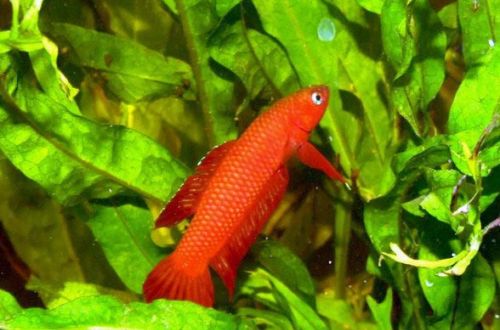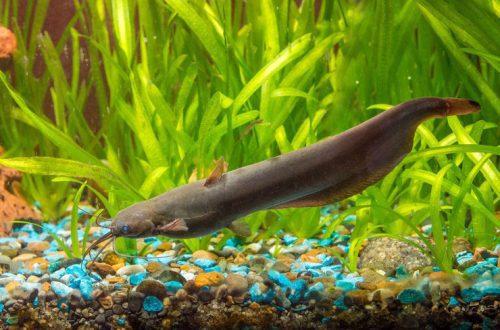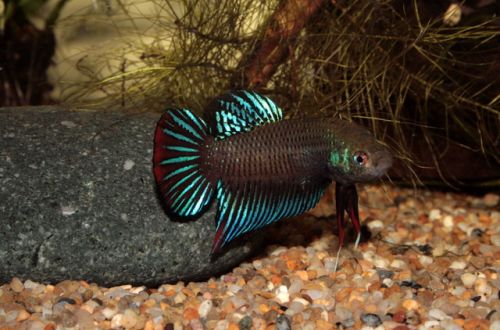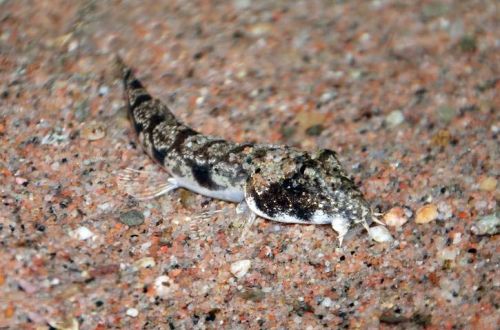
Betta Ubera
Betta Ubera, scientific name Betta uberis, belongs to the Osphronemidae family. Because of the need to keep conditions within a very narrow range of hydrochemical tolerances, this species of Betta is not recommended for beginner aquarists.

Contents
Habitat
It comes from Southeast Asia from the island of Borneo (Kalimantan). It inhabits peat bogs and streams associated with them, located in lowlands under the canopy of tropical forests. The surface of the reservoirs is poorly lit. The water has a rich brown color due to the abundance of tannins formed as a result of the decomposition of numerous plant organic matter. The content of mineral salts in the water is negligible, and the pH can be below 4.0. The bottom of the reservoirs is covered with a layer of fallen leaves and snags.
Brief information:
- The volume of the aquarium – from 40 liters.
- Temperature – 22-27°C
- Value pH — 4.0–6.0
- Water hardness – 1–5 dGH
- Substrate type – any
- Lighting – subdued
- Brackish water – no
- Water movement – little or no
- The size of the fish is up to 4 cm.
- Food – any food
- Temperament – conditionally peaceful
- Content singly or in pairs
Description
Adult individuals reach a length of up to 4 cm. The fish has an elongated slender body. The tail is rounded. The dorsal and anal fins are not high, but stretch from the middle of the body to the tail. Young fish are red in color. With age, they darken, becoming burgundy. The scales and rays of the fins acquire blue hues. Males are brighter than females.
Food
Fish grown in an artificial environment become omnivores. Accepts most popular commercial pet foods dry, fresh and frozen. It is recommended to use specialized products for Betta fish, produced by many manufacturers.
Maintenance and care, arrangement of the aquarium
The optimal size of the tank for one fish starts from 40 liters. When keeping Betta Uber it is important to provide an appropriate aquatic environment with very low pH and dGH values. Much attention is paid to the process of water treatment during periodic maintenance of the aquarium. Typically, a reverse osmosis device and other similar equipment designed to produce soft water is used. The filtration system along with the regular removal of organic waste (excrement, food leftovers) help maintain water quality at an acceptable level. Soft filtration is essential to keep the fish comfortable. Since they come from stagnant water bodies, a strong current can cause stress and negatively affect their well-being.
The design is arbitrary, however, the most natural fish will look in low light among snags and thickets of shade-loving plants. Often, the dried leaves of some trees are used to give the water a chemical composition characteristic of its natural habitat. Read more in the article “Which tree leaves can be used in an aquarium.”
Behavior and Compatibility
In small aquariums, males will compete with each other, entering into fights, which, however, do not lead to serious consequences. However, the weak losing individual will be forced to hide in order to avoid meeting with the dominant male. It is recommended to keep alone or in company with females. Compatible with other peaceful non-aggressive fish that can live in similar conditions.
Breeding / breeding
In favorable conditions, spawning occurs regularly. Like other Betta fish, male Betta Übera build foam-air nests under the undersurface of broadleaf plants or in cave shelters. For example, a piece of an ordinary PVC tube or a ceramic pot turned on its side can serve as a spawning site. During the construction of the nest, the male does not allow females to approach him, but when everything is finished, he changes his behavior and proceeds to active courtship. The female releases one egg at a time, the male captures it, fertilizes it and places it in the nest. In total, there are from 20 to 50 eggs in the clutch. The female does not take part in caring for the offspring; all responsibility for laying lies with the male. The incubation period lasts 24–48 hours, for another 3–4 days the fry remain in place, feeding on the remains of the yolk sac, and only then begin to swim freely in search of food.
Fish diseases
The cause of most diseases is unsuitable conditions of detention. A stable habitat will be the key to successful keeping. In the event of symptoms of the disease, first of all, the quality of the water should be checked and, if deviations are found, measures should be taken to correct the situation. If symptoms persist or even worsen, medical treatment will be required. Read more about symptoms and treatments in the Aquarium Fish Diseases section.





